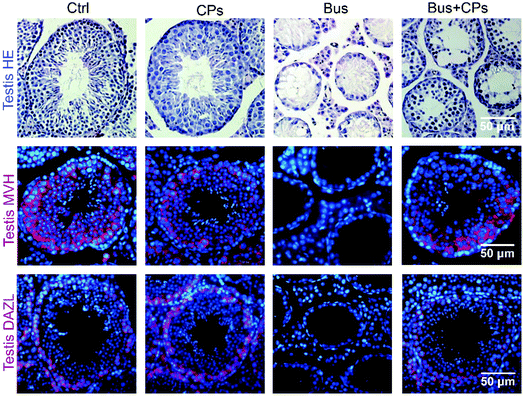 Open Access Article
Open Access ArticleCreative Commons Attribution 3.0 Unported Licence
Correction: Chestnut polysaccharides restore impaired spermatogenesis by adjusting gut microbiota and the intestinal structure
Zhong-Yi
Sun
a,
Shuai
Yu
b,
Yu
Tian
c,
Bao-Quan
Han
b,
Yong
Zhao
d,
Ya-Qi
Li
e,
Yan
Wang
b,
Yu-Jiang
Sun
cf and
Wei
Shen
*c
aUrology Department, Shenzhen University General Hospital, Shenzhen 518055, China
bUrology Department, Peking University Shenzhen Hospital, Shenzhen 518036, China
cCollege of Life Sciences, Key Laboratory of Animal Reproduction and Biotechnology in Universities of Shandong, Qingdao Agricultural University, Qingdao 266109, China. E-mail: wshen@qau.edu.cn; shenwei427@163.com
dState Key Laboratory of Animal Nutrition, Institute of Animal Sciences, Chinese Academy of Agricultural Sciences, Beijing, 100000, China
eUrology Department, Zaozhuang Hospital of Zaozhuang Mining Group, Zaozhuang 277100, China
fDongying Vocational Institute, Dongying 257091, China
First published on 9th February 2022
Abstract
Correction for ‘Chestnut polysaccharides restore impaired spermatogenesis by adjusting gut microbiota and the intestinal structure’ by Zhong-Yi Sun et al., Food Funct., 2022, 13, 425–436, DOI: 10.1039/D1FO03145G.
The authors regret that the panel for busulfan MVH in Fig. 1 was shown incorrectly in the original article. The correct version of Fig. 1 is shown below.
 | ||
| Fig. 1 Chestnut polysaccharides (CPs) increased germ cell quantity. Histopathology photos of HE staining and MVH and DAZL staining of mouse testes. | ||
The Royal Society of Chemistry apologises for these errors and any consequent inconvenience to authors and readers.
| This journal is © The Royal Society of Chemistry 2022 |
